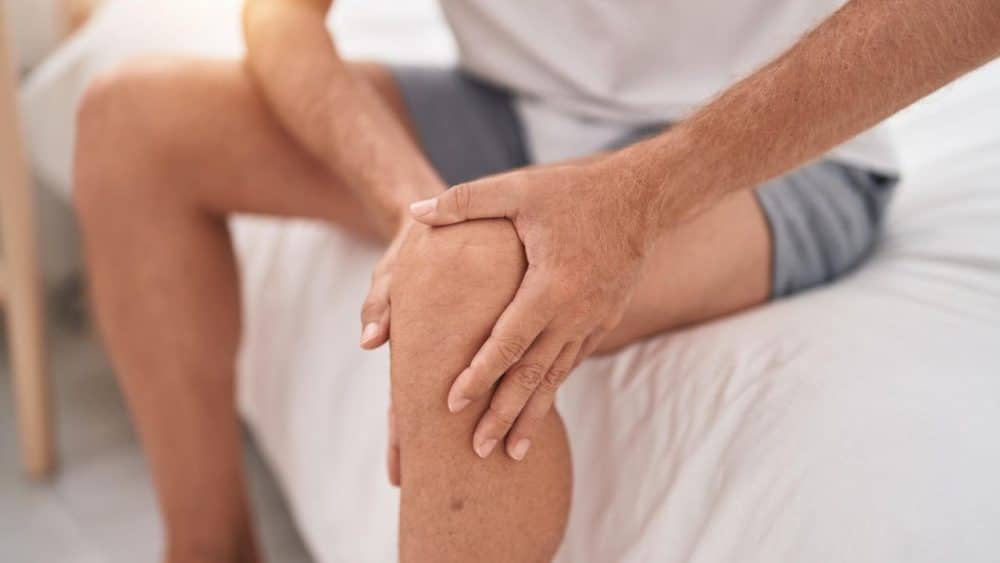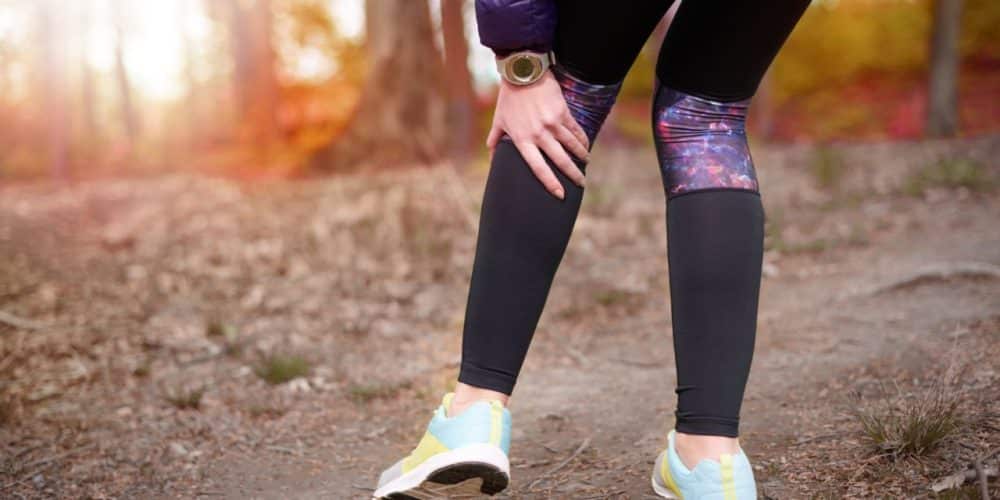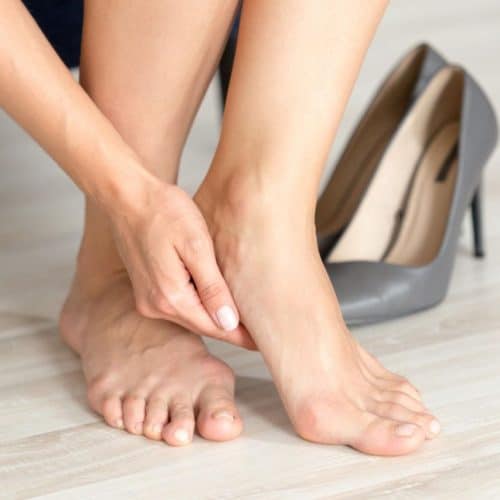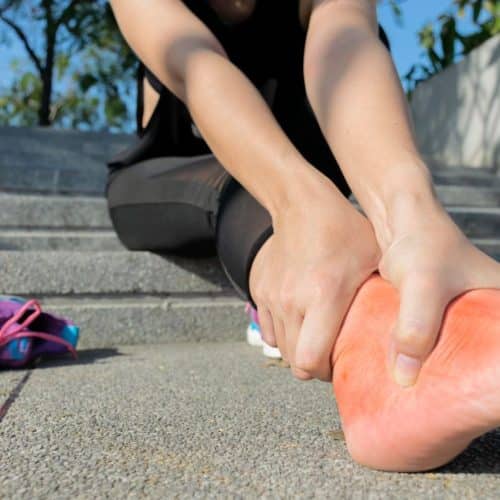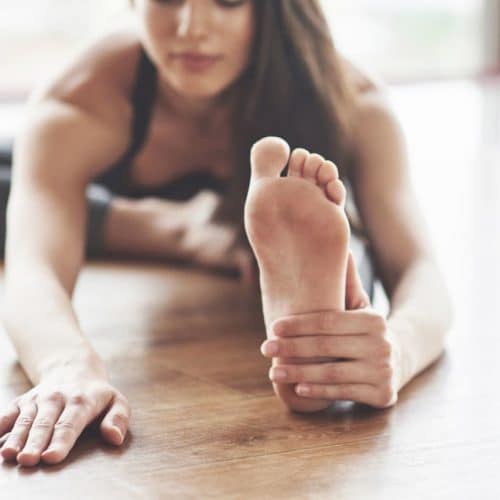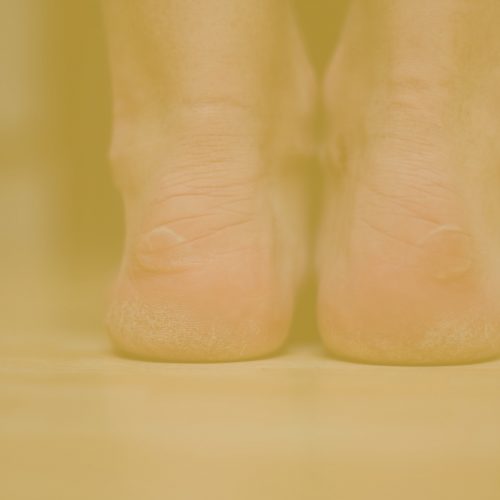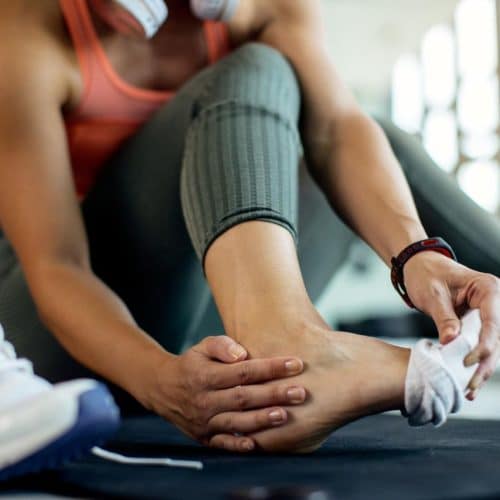Dealing with knee pain may be an excruciating and restrictive experience, impacting everything from routine everyday tasks to pursuing your favourite physical interests. This can make dealing with knee pain a painful and limiting experience.
Finding efficient strategies to manage and eliminate knee pain is essential for continuing to have a high quality of life, regardless of whether the knee pain is the result of an accident, arthritis, or excessive effort.
In this comprehensive guide, we’ll delve into five simple yet highly effective exercises tailored to relieve knee pain. These exercises are designed not only to alleviate discomfort but also to strengthen the muscles surrounding the knee joint, enhancing stability and flexibility.
Whether you’re seeking relief from chronic pain or aiming to prevent future discomfort, these exercises can be easily incorporated into your routine, promoting healthier knees and a more active lifestyle. Let’s embark on a journey towards stronger, more pain-free knees, one move at a time.
Understanding Knee Pain
Knee pain is a complex and often frustrating issue that can significantly impact your quality of life. To effectively address knee pain through exercises, it’s essential to understand the factors contributing to its development clearly. By delving deeper into the causes and types of knee pain, you can make informed decisions about which exercises will be most suitable for your specific condition.
1. Causes of Knee Pain
Knee pain can have a variety of causes, and determining the nature of those causes is the first step in formulating a treatment strategy that will be efficient as well as long-term. Some of the most frequent reasons are as follows:
- Injuries: Traumatic incidents like falls, sports-related injuries, and accidents can lead to acute knee pain. Ligament tears (such as ACL or MCL tears), meniscus injuries, and fractures are frequent culprits.
- Overuse and Strain: Repetitive movements, excessive strain, or prolonged activity can lead to overuse injuries and subsequent knee pain. This is particularly common in athletes and individuals who engage in high-impact activities.
- Arthritis: Osteoarthritis and rheumatoid arthritis are chronic conditions that can cause gradual deterioration of the knee joint’s cartilage, leading to pain, inflammation, and reduced mobility.
- Tendonitis: Inflammation of the tendons surrounding the knee, often caused by overuse or sudden changes in activity level, can result in knee pain.
- Bursitis: Bursae are small fluid-filled sacs that cushion the joint. Inflammation of these sacs, known as bursitis, can cause localised knee pain.
- Muscle Imbalances: Weakness or imbalances in the muscles that support the knee joint, such as the quadriceps and hamstrings, can lead to instability and pain.
- Alignment Issues: Misalignment of the knee joint due to structural differences or poor posture can cause uneven pressure on the joint, resulting in pain.
- Underlying Medical Conditions: Conditions such as gout, infections, and certain autoimmune diseases can also manifest as knee pain.
2. Types of Knee Pain
Knee pain can present in various ways, each indicating different underlying causes:
- Anterior Knee Pain: Pain at the front of the knee, often associated with activities like stair climbing or squatting, can be linked to patellofemoral pain syndrome.
- Medial Knee Pain: Pain on the inner side of the knee may stem from issues with the medial collateral ligament (MCL), medial meniscus, or arthritis.
- Lateral Knee Pain: Pain on the outer side of the knee might be related to iliotibial (IT) band syndrome, lateral collateral ligament (LCL) injuries, or lateral meniscus problems.
- Posterior Knee Pain: Pain at the back of the knee could be due to issues with the hamstrings, popliteal cysts, or biceps femoris tendonitis.
- Generalised Knee Pain: Pain that’s diffuse and doesn’t have a specific location can indicate conditions like osteoarthritis or muscle imbalances.
3. Consultation and Diagnosis
Consulting a qualified healthcare practitioner is crucial before embarking on any exercise program for knee pain relief. A medical evaluation will help determine the underlying cause of your knee pain and guide the appropriate course of action.
Your healthcare practitioner can offer personalised recommendations based on the diagnosis, including exercises, physical therapy, medication, or surgical interventions.
Understanding the intricacies of knee pain is essential for selecting exercises that target the root causes and provide effective relief.
By recognising the diverse causes and types of knee pain, you’ll be better equipped to choose exercises that align with your condition, ultimately paving the way for improved knee health and a more active lifestyle.
Always prioritise professional guidance and listen to your body throughout your journey to alleviating knee pain.
Exercises for Knee Pain Relief
1. Squats
Squats are foundational exercises renowned for strengthening the lower body, including the quadriceps, hamstrings, glutes, and core muscles. While squats offer many benefits for overall lower body strength and stability, they can be beneficial and challenging for individuals seeking knee pain relief. Let’s explore how squats can be approached to ensure their effectiveness while minimising knee strain.
1. Benefits of Squats
- Muscle Strengthening: Squats engage a wide range of muscles, including the quadriceps, which play a vital role in knee stability. Strengthening these muscles can help support the knee joint and alleviate pain.
- Improved Range of Motion: Performing squats through a proper range of motion can enhance joint flexibility and reduce stiffness, contributing to better knee function.
- Functional Fitness: Squats are designed to replicate actions that we carry out on a regular basis, such as sitting and standing. By refining your squat technique, you may improve your functional fitness and alleviate some of the pressure that is placed on your knees by the activities of daily life.
2. Approaching Squats for Knee Pain Relief
For individuals experiencing knee pain, performing standard squats might exacerbate discomfort due to the load placed on the knees. However, several modifications and alternatives can make squats more knee-friendly:
- Gentle Squats: Begin with partial squats or shallow squats to reduce the range of motion and decrease the pressure on the knee joint. As your strength and comfort levels improve, gradually increase the depth of your squat.
- Wall-Supported Squats: Stand with your back against a wall and slide down as if sitting in an imaginary chair. The wall provides support, reducing the strain on your knees. Focus on maintaining proper alignment and gradually increase the duration of your holds.
- Assisted Squats: Use a stable surface, such as a chair or countertop, to hold onto while performing squats. This provides additional support and allows you to control the weight placed on your knees.
3. Proper Form and Technique
- Regardless of the squat variation you choose, proper form is crucial to prevent undue stress on the knees:
- Alignment: Keep your knees aligned with your feet. Avoid letting your knees collapse inward, as this can strain the joint.
- Hips and Back: Hinge at your hips as you lower yourself into the squat. Keep your back straight and chest lifted to maintain a neutral spine.
- Weight Distribution: Distribute your weight evenly between your heels and the balls of your feet. Avoid putting excessive pressure on your toes.
- Knee Tracking: As you squat, ensure your knees are aligned with your toes. Avoid letting your knees extend beyond your toes, which can increase stress on the joint.
4. Progression and Consistency
Starting with gentler variations and gradually progressing to deeper squats as your strength and comfort levels improve is essential. Consistency is key; performing squats regularly, with proper form, can lead to noticeable improvements in knee pain relief over time.
Squats can be valuable exercises for strengthening the muscles around the knee joint and promoting overall lower-body stability. By approaching squats cautiously, utilising modified versions, and maintaining proper form, individuals with knee pain can reap the benefits of this versatile exercise while minimising the risk of exacerbating discomfort.
As with any exercise regimen, it’s wise to consult a healthcare practitioner before incorporating squats into your routine, especially if you have existing knee issues.
2. Leg Raises
Leg raises are versatile exercises that target the quadriceps and help stabilise the knee joint. They are particularly effective for individuals seeking knee pain relief, as they engage the muscles surrounding the knee without subjecting it to excessive stress. Let’s delve into leg raises’ benefits and explore variations that can accommodate various fitness levels and knee conditions.
1. Benefits of Leg Raises
- Targeted Muscle Engagement: Leg raises primarily focus on the quadriceps, which is essential for knee stability. Strengthening these muscles can provide better support for the knee joint, reducing the risk of pain and discomfort.
- Low Impact: Leg raises are low-impact exercises, putting minimal strain on the knee joint. This makes them an excellent choice for individuals with sensitive knees or those recovering from knee injuries.
- Muscle Imbalance Correction: Leg raises can help address muscle imbalances around the knee joint, contributing to pain and instability. By strengthening the quadriceps, you can promote balanced muscle development.
2. Variations of Leg Raises
- Basic Leg Raises: Lie on your back with your legs straight and lift one leg a few inches off the ground. Hold for a few seconds before lowering it back down. Repeat on the other leg. Focus on engaging your quadriceps while keeping your core muscles engaged for stability.
- Side Leg Raises: Lie on your side and lift the top leg while keeping it straight. This variation targets the muscles on the side of the hip and thigh, which play a crucial role in knee stability.
- Clamshells: Lie on your side with your knees bent at a 90-degree angle. Keeping your feet together, lift the top knee while keeping your feet touching. This exercise engages the hip muscles and helps stabilise the knee joint.
- Straight Leg Raises: Sit on a chair with your legs extended. Lift one leg straight before you, hold it briefly, and lower it back. This seated variation targets the quadriceps and can be less strenuous on the knees.
3. Proper Form and Technique
Maintaining proper form is crucial to ensure the effectiveness of leg raises and prevent any strain on the knees:
- Controlled Movement: Avoid swinging your legs or using momentum to lift them. Focus on controlled movements to engage the muscles properly.
- Slow and Steady: Lift and lower your leg in a slow and controlled manner. This ensures you’re working the muscles throughout the entire range of motion.
- Breathing: Inhale as you lower your leg and exhale as you lift it. This rhythmic breathing can help stabilise your core and enhance the exercise’s effectiveness.
4. Progression and Consistency
Begin with a manageable number of repetitions and gradually increase as your strength improves. Consistency is key; regularly performing leg raises can enhance muscle strength and improve knee stability.
Leg raises are effective exercises for individuals seeking knee pain relief. By targeting the quadriceps and engaging the muscles around the knee joint, leg raises provide a low-impact option for strengthening and stabilising the knee.
Whether you choose basic leg raises, side leg raises, clamshells or seated leg raises, prioritise proper form and gradually progress as you build strength. Consulting a healthcare practitioner before starting a new exercise routine is advisable, especially if you have knee issues.
3. Lunges
Lunges are popular lower-body exercises that target the quadriceps, hamstrings, and glutes, making them an effective choice for enhancing lower-body strength and stability. However, when it comes to knee pain relief, lunges require careful consideration due to their potential impact on the knees. Let’s delve into the benefits and challenges of lunges and explore modifications that can make them more accessible for individuals seeking relief from knee discomfort.
1. Benefits of Lunges
- Muscle Engagement: Lunges engage multiple muscle groups, including the quadriceps, hamstrings, glutes, and core. Strengthening these muscles contributes to better knee stability and overall lower body strength.
- Functional Fitness: Lunges mimic movements that involve stepping and bending the knees, making them relevant to daily activities like walking, climbing stairs, and getting up from a seated position.
- Balance and Coordination: Lunges challenge balance and coordination, which are essential for joint stability and injury prevention.
2. Approaching Lunges for Knee Pain Relief
- While lunges offer numerous benefits, they can exacerbate knee pain due to their impact on the knees. For individuals with knee issues, some modifications and alternatives can make lunges more accessible:
- Reverse Lunges: Instead of stepping forward, step backward into the lunge. This places less pressure on the knee joint and allows you to control the range of motion.
- Stationary Lunges: Perform lunges while keeping your feet in place. This reduces the amount of forward movement and decreases the strain on the knees.
- Shallow Lunges: Limit the depth of your lunge to a comfortable level that doesn’t cause discomfort. Gradually increase the depth as your strength and comfort levels improve.
3. Proper Form and Technique
- Executing lunges with proper form is essential to prevent unnecessary strain on the knees and ensure their effectiveness:
- Alignment: Keep your front knee aligned with your ankle as you lunge. Avoid letting it extend beyond your toes, which can place excessive pressure on the knee joint.
- Back Knee: Lower your back knee toward the ground while maintaining a straight line from your head to your heel. Avoid allowing your back knee to touch the floor forcefully.
- Hips: Keep your hips squared and facing forward throughout the movement. This helps maintain proper alignment and minimises strain on the knees.
- Balance: Engage your core muscles to help maintain balance and stability during the lunge. This can also help prevent unnecessary stress on the knees.
4. Progression and Consistency
Start with modified versions of lunges and gradually progress to deeper or more advanced variations as your strength improves. Consistency is key; regularly incorporating lunges into your routine can increase lower body strength and improve knee stability.
Lunges offer substantial benefits for lower body strength and stability, making them valuable exercises for knee pain relief. By approaching lunges with caution, utilising modified versions, and maintaining proper form, individuals with knee pain can enjoy the advantages of this versatile exercise while minimising discomfort.
As with any exercise regimen, consulting a healthcare practitioner before incorporating lunges into your routine is recommended, particularly if you have existing knee issues.
4. Cycling
Cycling is a low-impact cardiovascular exercise valuable to your knee pain relief routine. Its gentle nature makes it suitable for individuals seeking to improve knee health without subjecting the joint to excessive strain. Let’s explore the benefits of cycling for knee pain relief and discuss how to approach this exercise for optimal results.
1. Benefits of Cycling
- Low Impact: Cycling is a non-weight-bearing exercise that doesn’t directly impact the knees. This makes it an excellent choice for individuals with sensitive knees or those recovering from injuries.
- Joint Flexibility: The cycling motion involves consistent bending and extending of the knees, promoting joint flexibility and reducing stiffness.
- Muscle Engagement: Cycling engages various muscles, including the quadriceps, hamstrings, calves, and glutes. Strengthening these muscles can contribute to improved knee stability.
- Cardiovascular Health: Cycling provides an effective cardiovascular workout, enhancing heart health and promoting circulation, which is essential for joint function.
2. Approaching Cycling for Knee Pain Relief
To make the most of cycling for knee pain relief, consider the following tips and recommendations:
- Proper Bike Setup: Ensure your bike is properly adjusted to fit your body. Incorrect bike setup can lead to poor posture and increased knee strain. Pay attention to saddle height, handlebar position, and pedal alignment.
- Resistance Level: Start with a low resistance level to avoid placing excessive strain on the knees. As your strength and endurance improve, gradually increase the resistance.
- Cycling Technique: Maintain a smooth pedalling motion and avoid pushing too hard with the pedals. Focus on maintaining a comfortable pace and proper form.
- Flat Terrains: Opt for flat terrains or stationary bikes initially. These surfaces minimise the risk of sudden jolts or impact, creating a safer knee environment.
- Listen to Your Body: If you experience any discomfort or pain while cycling, reduce the intensity or duration of your session. It’s essential to prioritise your knee health and avoid exacerbating any issues.
3. Progression and Consistency
Start with shorter cycling sessions and gradually increase the duration as your knees become accustomed to the exercise. Consistency is key; regular cycling sessions can improve knee function and enhance cardiovascular health.
Cycling is a low-impact exercise that offers valuable benefits for individuals seeking knee pain relief. Its gentle nature and joint-friendly motion make it suitable for promoting knee health while providing an effective cardiovascular workout.
By focusing on proper bike setup, technique, and gradual progression, you can enjoy the advantages of cycling while minimising strain on the knees. As always, consulting a healthcare practitioner before starting any new exercise routine, especially if you have existing knee issues, is advisable.
5. Swimming
Swimming is a highly effective and low-impact exercise that offers remarkable benefits for individuals seeking knee pain relief. The buoyancy of water reduces the impact on joints, making it an ideal option for improving knee health while engaging in a full-body workout. Let’s explore the advantages of swimming for knee pain relief and discuss how to approach this exercise to maximise its benefits.
1. Benefits of Swimming
- Low-Impact: Swimming is virtually weightless in water, minimising the stress on joints like the knees. This characteristic makes it an excellent choice for individuals with knee pain, as it reduces the risk of exacerbating discomfort.
- Full-Body Workout: Swimming engages multiple muscle groups simultaneously, including the arms, legs, core, and back. This comprehensive engagement leads to improved overall strength and joint stability.
- Cardiovascular Health: Swimming provides an effective cardiovascular workout, promoting heart health and enhancing circulation, vital for joint function.
- Joint Flexibility: The fluid motions of swimming encourage joint flexibility, reducing stiffness and enhancing the range of motion in the knees.
2. Approaching Swimming for Knee Pain Relief
To make the most of swimming for knee pain relief, consider the following tips and strategies:
- Swim Strokes: Different swim strokes offer various benefits. Freestyle (also known as the front crawl) and backstroke are generally considered knee-friendly, as they involve smooth and controlled movements without excessive impact on the knees.
- Warm-Up: Begin with a gentle warm-up, such as walking or treading water, to gradually acclimate your body to the water and prepare your muscles for swimming.
- Proper Technique: Focus on maintaining proper swimming technique, including body alignment and controlled motions. Avoid forceful movements that could strain the knees.
- Breathing: Practice rhythmic breathing to maintain proper form and ease the exertion on your body. Inhale during strokes and exhale while your face is submerged in water.
- Rest and Recovery: Incorporate rest periods between laps or sets to prevent overexertion and give your muscles and joints time to recover.
3. Progression and Consistency
Start with shorter swimming sessions and gradually increase the duration as your strength and endurance improve. Consistency is key; regular swimming sessions can enhance knee stability, overall strength, and cardiovascular health.
Swimming is an exceptional exercise for knee pain relief, offering a full-body workout with minimal strain on the joints. Its low-impact nature, joint flexibility benefits, and cardiovascular advantages make it an ideal option for individuals seeking to improve knee health.
By focusing on proper swimming technique, gradual progression, and listening to your body, you can harness the benefits of swimming while prioritising the well-being of your knees. As always, consulting a healthcare practitioner before starting any new exercise routine, especially if you have existing knee issues, is recommended.
Conclusion
Incorporating targeted exercises into your routine can be a game-changer when alleviating knee pain and enhancing your overall quality of life. The five simple moves we’ve explored – squats, leg raises, lunges, cycling, and swimming – each offer unique benefits that contribute to knee pain relief in their way. Whether you’re dealing with injuries, overuse, or arthritis, these exercises can significantly strengthen the muscles around the knee joint, improve stability, and promote joint flexibility.
Remember, there’s no one-size-fits-all approach to knee pain relief. It’s crucial to consult a healthcare practitioner before starting any new exercise regimen, especially if you have existing knee issues or underlying medical conditions. With their guidance, you can tailor your exercise routine to your needs, ensuring safety and effectiveness.
Incorporate these exercises mindfully, paying close attention to your body’s signals. Gradually increase the intensity and duration of your workouts as your strength improves, but always prioritise proper form and listen to any discomfort your body may be signalling.
By taking proactive steps to address knee pain through these exercises, you invest in your overall well-being and pave the way for a more active and fulfilling lifestyle.
Have you tried any of these exercises for knee pain relief before, and if so, which one has shown the most promising results for you?
Content Summary
- Finding efficient strategies to manage and eliminate knee pain is essential for continuing to have a high quality of life, regardless of whether the knee pain is the result of an accident, arthritis, or excessive effort.
- Whether you’re seeking relief from chronic pain or aiming to prevent future discomfort, these exercises can be easily incorporated into your routine, promoting healthier knees and a more active lifestyle.
- Knee pain is a complex and often frustrating issue that can significantly impact your quality of life.
- To effectively address knee pain through exercises, it’s essential to understand the factors contributing to its development clearly.
- By delving deeper into the causes and types of knee pain, you can make informed decisions about which exercises will be most suitable for your specific condition.
- Knee pain can have a variety of causes, and determining the nature of those causes is the first step in formulating a treatment strategy that will be efficient as well as long-term.
- Inflammation of these sacs, known as bursitis, can cause localised knee pain.
- Pain at the front of the knee, often associated with activities like stair climbing or squatting, can be linked to patellofemoral pain syndrome or chondromalacia patellae.
- Before embarking on any exercise program for knee pain relief, it’s crucial to consult a qualified healthcare practitioner.
- A medical evaluation will help determine the underlying cause of your knee pain and guide the appropriate course of action.
- Squats are foundational exercises renowned for strengthening the lower body, including the quadriceps, hamstrings, glutes, and core muscles.
- While squats offer many benefits for overall lower body strength and stability, they can be beneficial and challenging for individuals seeking knee pain relief.
- Performing squats through a proper range of motion can enhance joint flexibility and reduce stiffness, contributing to better knee function.
- By refining your squat technique, you may improve your functional fitness and alleviate some of the pressure that is placed on your knees by the activities of daily life.
- For individuals experiencing knee pain, performing standard squats might exacerbate discomfort due to the load placed on the knees.
- Begin with partial squats or shallow squats to reduce the range of motion and decrease the pressure on the knee joint.
- Starting with gentler variations and gradually progressing to deeper squats as your strength and comfort levels improve is essential.
- Consistency is key; performing squats regularly, with proper form, can lead to noticeable improvements in knee pain relief over time.
- Squats can be valuable exercises for strengthening the muscles around the knee joint and promoting overall lower-body stability.
- As with any exercise regimen, it’s wise to consult a healthcare practitioner before incorporating squats into your routine, especially if you have existing knee issues.
- Leg raises are versatile exercises that target the quadriceps and help stabilise the knee joint.
- Leg raises primarily focus on the quadriceps, which is essential for knee stability.
- Lie on your back with your legs straight and lift one leg a few inches off the ground.
- Avoid swinging your legs or using momentum to lift them.
- Focus on controlled movements to engage the muscles properly.
- Consistency is key; regularly performing leg raises can lead to enhanced muscle strength and improved knee stability.
- Leg raises are effective exercises for individuals seeking knee pain relief.
- Whether you choose basic leg raises, side leg raises, clamshells or seated leg raises, prioritise proper form and gradually progress as you build strength.
- Lunges challenge balance and coordination, which are essential for joint stability and injury prevention.
- While lunges offer numerous benefits, they can exacerbate knee pain due to their impact on the knees.
- Instead of stepping forward, step backward into the lunge.
- Perform lunges while keeping your feet in place.
- Keep your front knee aligned with your ankle as you lunge.
- This helps maintain proper alignment and minimises strain on the knees.
- Engage your core muscles to help maintain balance and stability during the lunge.
- Cycling is a low-impact cardiovascular exercise valuable to your knee pain relief routine.
- Ensure your bike is properly adjusted to fit your body.
- It’s essential to prioritise your knee health and avoid exacerbating any issues.
- By focusing on proper bike setup, technique, and gradual progression, you can enjoy the advantages of cycling while minimising strain on the knees.
- As always, consulting a healthcare practitioner before starting any new exercise routine, especially if you have existing knee issues, is advisable.
- Swimming is a highly effective and low-impact exercise that offers remarkable benefits for individuals seeking knee pain relief.
- The buoyancy of water reduces the impact on joints, making it an ideal option for improving knee health while engaging in a full-body workout.
- Different swim strokes offer various benefits.
- Begin with a gentle warm-up, such as walking or treading water, to gradually acclimate your body to the water and prepare your muscles for swimming.
- Swimming is an exceptional exercise for knee pain relief, offering a full-body workout with minimal strain on the joints.
- By focusing on proper swimming technique, gradual progression, and listening to your body, you can harness the benefits of swimming while prioritising the well-being of your knees.
- Incorporating targeted exercises into your routine can be a game-changer when alleviating knee pain and enhancing your overall quality of life.
- The five simple moves we’ve explored – squats, leg raises, lunges, cycling, and swimming – each offer unique benefits that contribute to knee pain relief in their way.
- Remember, there’s no one-size-fits-all approach to knee pain relief.
- Incorporate these exercises mindfully, paying close attention to your body’s signals.
FAQs
1. What causes knee pain in the first place?
Knee pain can stem from various factors, including injuries, overuse, arthritis, ligament tears, and even underlying medical conditions. Identifying the root cause is essential for devising an effective pain relief strategy.
2. Are these exercises appropriate for dealing with different kinds of knee pain?
It is important to visit a healthcare practitioner before beginning any new exercise programme, especially if you have a prior medical condition. Although these exercises are typically good for many forms of knee pain, it is vital to consult a healthcare practitioner before beginning any new exercise plan. They are able to offer personalised advice depending on the circumstances of your particular case.
3. How often ought I to carry out these exercises?
Consistency is key. Performing these exercises at least three to four times a week is recommended for optimal results. However, listen to your body – if you experience discomfort during or after the exercises, adjusting the frequency or intensity might be wise.
4. Can these exercises replace medical treatment for knee pain?
These exercises are intended to complement medical treatment, not replace it. If you’re experiencing severe or persistent knee pain, it’s essential to consult a healthcare practitioner for a proper diagnosis and treatment plan.
5. Will these exercises help prevent future knee pain?
Absolutely. Strengthening the muscles around the knee joint can enhance its stability and support, which may help prevent future instances of knee pain. Incorporating these exercises into your routine can contribute to long-term knee health.


